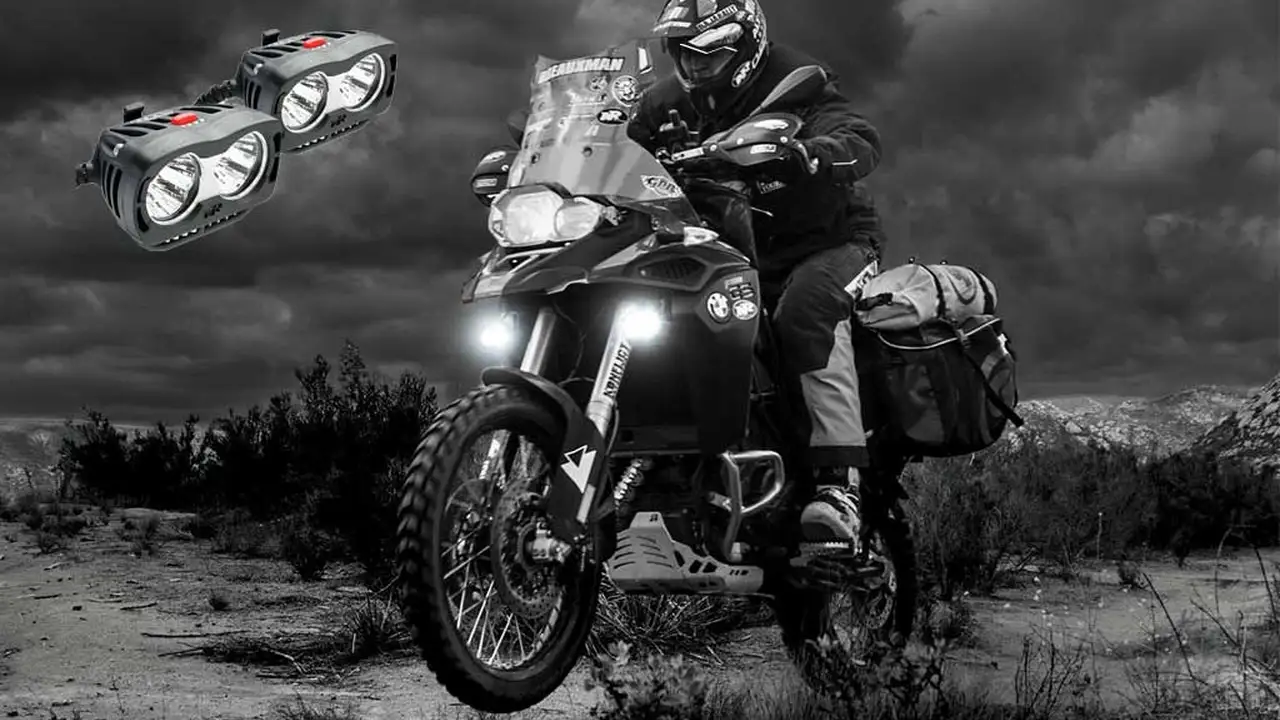ADV Motorcycle Electrical System Basics
Understanding your ADV motorcycle's electrical system is crucial for both on-road reliability and off-road adventures. Knowing the basics can save you from being stranded miles from civilization. This guide will walk you through the fundamentals, troubleshooting common issues, and even suggest some essential products to keep you rolling.

So, you're ready to dive into the electrifying world of your adventure bike? Good choice! A solid understanding of your motorcycle's electrical system can be a lifesaver, especially when you're tackling remote trails or putting down serious highway miles. We're going to break down the core components, common problems, and some must-have gear for keeping things humming.
ADV Motorcycle Battery Basics and Maintenance
Let's start with the heart of the system: the battery. Your ADV motorcycle's battery provides the initial jolt to get things started and powers all the electrical components when the engine isn't running at sufficient RPMs to keep the charging system happy. There are a few different types out there, but the most common are lead-acid (including flooded and AGM - Absorbed Glass Mat) and lithium-ion.
Lead-Acid Batteries: These are the traditional workhorses. Flooded lead-acid batteries are the cheapest, but require more maintenance (checking fluid levels). AGM batteries are sealed, maintenance-free, and more resistant to vibration, making them a better choice for ADV bikes. Expect to pay around $80-$150 for a quality AGM battery.
Lithium-Ion Batteries: These are the new kids on the block. They're significantly lighter and can offer more cranking power than lead-acid batteries. However, they're more expensive and can be sensitive to extreme temperatures. If you're looking to shave weight and don't mind spending the extra cash (around $200-$400), a lithium-ion battery might be a good option. Be sure your charging system is compatible with Lithium batteries!
Maintenance Tips: Regardless of the battery type, keep the terminals clean and free of corrosion. Use a battery terminal cleaner or a mixture of baking soda and water. Check the battery voltage regularly with a multimeter. A healthy battery should read around 12.6 volts when fully charged. If you're not riding your bike for extended periods, use a battery tender to keep the battery topped up. Leaving a battery discharged for too long can shorten its lifespan.
Understanding the ADV Motorcycle Charging System: Alternators and Regulators
Once the engine is running, the charging system takes over. This system is responsible for replenishing the battery and powering all the electrical accessories. The two main components are the alternator (also called a stator) and the voltage regulator/rectifier.
Alternator/Stator: This generates AC (alternating current) electricity as the engine spins. It's essentially a coil of wire that interacts with magnets to produce electricity. A failing stator can lead to a dead battery and a bike that won't start. Signs of a bad stator include dimming lights, a weak battery, and the inability to maintain a charge.
Voltage Regulator/Rectifier: This converts the AC voltage from the alternator into DC (direct current) voltage that the battery and other components can use. It also regulates the voltage to prevent overcharging. A faulty regulator/rectifier can overcharge the battery, leading to damage, or undercharge it, causing the battery to drain. Look for signs like a battery that boils over, a battery that constantly needs charging, or flickering lights.
Troubleshooting: If you suspect a problem with your charging system, start by checking the voltage at the battery with the engine running. It should be around 13.5-14.5 volts. If it's significantly lower or higher, you likely have a problem with the alternator or regulator/rectifier. You can use a multimeter to test the output of the alternator and the regulator/rectifier according to your bike's service manual.
ADV Motorcycle Wiring Harness and Electrical Connections
The wiring harness is the nervous system of your ADV motorcycle. It's a network of wires that connects all the electrical components. Over time, wires can become damaged, corroded, or disconnected, leading to all sorts of electrical problems.
Common Issues: Look for frayed wires, loose connections, and corroded terminals. Water and dirt can wreak havoc on electrical connections, especially in off-road environments. Pay close attention to areas where the wiring harness is exposed to the elements or subject to vibration.
Maintenance and Repair: Regularly inspect the wiring harness for damage. Use dielectric grease on all electrical connections to prevent corrosion. If you find a damaged wire, repair it using a proper crimping tool and heat-shrink tubing. Avoid using electrical tape, as it can become brittle and lose its adhesion over time. For more complex repairs, consult a wiring diagram and consider seeking professional help.
ADV Motorcycle Lighting Systems: Headlights, Taillights, and Turn Signals
Proper lighting is essential for safety, especially when riding at night or in low-light conditions. Your ADV motorcycle's lighting system includes headlights, taillights, turn signals, and potentially auxiliary lights.
Headlights: Many older ADV bikes use halogen headlights, which are relatively inexpensive but not very bright. LED headlights are becoming increasingly popular due to their superior brightness, lower power consumption, and longer lifespan. HID (High-Intensity Discharge) headlights offer excellent brightness but can be more complex to install and maintain.
Taillights and Turn Signals: LED taillights and turn signals are almost standard on modern ADV bikes. They offer instant-on illumination, which improves visibility, and are very durable. Make sure your taillight and turn signals are functioning properly before each ride.
Auxiliary Lights: For serious off-road adventures, auxiliary lights can make a huge difference. LED driving lights provide additional illumination for increased visibility at night. Consider adding a set of floodlights for wide-angle illumination in tight trails. When choosing auxiliary lights, pay attention to the lumen output, beam pattern, and power consumption.
Essential ADV Motorcycle Electrical Accessories and Products
Now let's talk about some must-have electrical accessories and products that can enhance your ADV riding experience and provide peace of mind.
Multimeter: A multimeter is an indispensable tool for diagnosing electrical problems. It allows you to measure voltage, current, and resistance. A basic multimeter can be purchased for around $20-$50, while a more advanced model with features like auto-ranging and continuity testing will cost around $50-$100.
Battery Tender/Charger: A battery tender keeps your battery topped up when the bike is not in use. This is especially important for lithium-ion batteries. OptiMate and Battery Tender are two popular brands. Expect to pay around $50-$100 for a quality battery tender.
USB Charger: A USB charger allows you to charge your phone, GPS, or other electronic devices on the go. There are many different options available, from simple handlebar-mounted USB ports to more sophisticated units that integrate with your bike's electrical system. Look for a charger that is waterproof and provides sufficient amperage to charge your devices quickly.
Recommended Product: 3BR Powersports TAPP USB Power Port: This is a rugged, waterproof USB charger designed specifically for motorcycles. It features a high-output USB port that can charge your devices quickly. It retails for around $35.
Jump Starter: A portable jump starter can be a lifesaver if your battery dies in the middle of nowhere. These compact devices can provide enough power to jump-start your bike. Look for a jump starter with a high peak amperage rating and safety features like reverse polarity protection. NOCO Boost is a popular brand.
Recommended Product: NOCO Boost Plus GB40 1000 Amp 12-Volt UltraSafe Lithium Jump Starter: This compact and powerful jump starter can jump-start most motorcycles and cars. It features a built-in LED flashlight and can also be used to charge USB devices. It retails for around $100.
Wiring Repair Kit: A wiring repair kit should include a crimping tool, wire strippers, heat-shrink tubing, connectors, and a selection of wire. This will allow you to make basic repairs to the wiring harness in the field. A good kit will cost around $30-$50.
Auxiliary Lights: Adding auxiliary lights can dramatically improve your visibility at night. Denali Electronics and Clearwater Lights are two popular brands that offer high-quality LED auxiliary lights. Prices range from $200 to $500 per set, depending on the size, brightness, and features.
Product Comparison: Denali D4 vs. Clearwater Erica: The Denali D4 lights are a great mid-range option, offering excellent brightness and durability at a reasonable price (around $300 per set). The Clearwater Erica lights are a premium option, providing exceptional brightness and a wide beam pattern (around $500 per set). If you're looking for the best possible visibility, the Clearwater Erica lights are worth the investment. However, the Denali D4 lights offer a great balance of performance and value.
Troubleshooting Common ADV Motorcycle Electrical Problems
Let's face it, electrical problems are inevitable, especially on ADV bikes that are subjected to harsh conditions. Here are some common problems and how to troubleshoot them:
Dead Battery: Check the battery voltage with a multimeter. If it's below 12 volts, try charging it with a battery tender. If the battery won't hold a charge, it may need to be replaced. Also, check for parasitic draws, which are components that are draining the battery even when the bike is turned off.
Fuses Blowing: If a fuse keeps blowing, there's likely a short circuit in the wiring. Trace the circuit to find the source of the short. Look for damaged wires or components that are grounding out.
Dim Lights: Dim lights can be caused by a weak battery, a faulty alternator, or corroded electrical connections. Check the battery voltage with the engine running. If it's low, the alternator may be the problem. Clean and tighten all electrical connections.
Starting Problems: Starting problems can be caused by a weak battery, a faulty starter motor, or a problem with the ignition system. Check the battery voltage and the condition of the starter motor. If the starter motor is spinning but the engine isn't turning over, there may be a problem with the starter clutch.
Electrical Gremlins: Sometimes, electrical problems can be difficult to diagnose. In these cases, it's best to consult a wiring diagram and systematically check each component in the circuit. A multimeter and a good understanding of electrical principles are essential.
By understanding the basics of your ADV motorcycle's electrical system, you can keep your bike running smoothly and avoid being stranded on the trail. Remember to regularly inspect your electrical components, keep your battery charged, and carry a basic toolkit with you on your adventures.
:max_bytes(150000):strip_icc()/277019-baked-pork-chops-with-cream-of-mushroom-soup-DDMFS-beauty-4x3-BG-7505-5762b731cf30447d9cbbbbbf387beafa.jpg)






